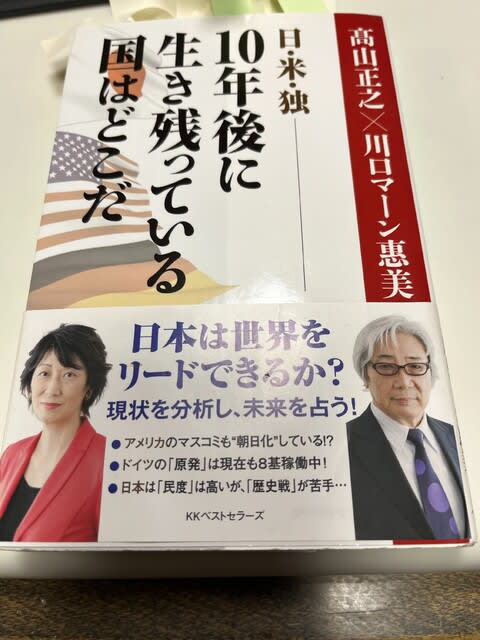The following is a continuation of the previous chapter.
It is a must-read not only for the Japanese people but for people worldwide.
From "Media as America's Pet Dog" to "Media of Marxism"
Takayama
I want to add that newspapers still functioned correctly after the war until before the 60-year Security Treaty.
There was no bias as we see today.
For example, there were no stories of hatred against the "national flag," and thanks to that, the Hinomaru was continually displayed in front of houses on holidays in Japan.
Kawaguchi
That may be true.
As I recall, NHK used to end its daily broadcast with "the national flag" and "Kimigayo" as well.
Takayama
The Asahi Shimbun, for example, was led by the aforementioned Ryu Shintaro as editorial director at that time.
Ryu Shintaro was a correspondent in Germany during the war and escaped to Switzerland, where he met Allen Dulles, who was leading the Swiss bureau of the OSS and became his collaborator.
The Asahi Shimbun was then positioned as the window for U.S. policy toward Japan.
Kawaguchi
Although GHQ no longer exists, does the Asahi Shimbun still follow the "GHQ spirit"?
Takayama
In a sense, you could say so.
Before the war, in the first half of the 20th century, the problem for the U.S. was the fear that Japan would rise to power, incorporate China, and lead China's 400 million people.
So, the U.S. created Tsinghua University and invited international students to come to the U.S. in an attempt to divide China and Japan.
The division of Japan and China was the policy of the U.S. until the end.
After the war, China became more muscular.
If Japan and China joined hands again, it would be troublesome.
Therefore, the policy was to separate the two countries.
The United States will also try to prevent Japan from becoming united.
Kawaguchi.
In the first place, the ousting of Chiang Kai-shek and the establishment of the Communist government was also an intervention of the U.S., wasn't it?
Takayama
The year before the 60-year Security Treaty occurred in Japan, Shintaro Ryu launched the Asahi Journal.
The purpose was to divide and confuse Japan.
The students rushed through the south gate of the National Diet Building on June 15, 1960, and Michiko Kanba, a student at the University of Tokyo, was killed in the struggle for the Security Treaty, which was fueled by the discourse in the journal.
Hundreds of thousands of people were predicted to gather to mourn Kanba.
There were fears that even a so-called "revolutionary situation" would emerge.
At that time, Ryu Shintaro led a group of Tokyo-based newspapers to issue a joint editorial banning all riotous demonstrations.
The newspapers turned their backs on the demonstrators.
It was a joint editorial by seven Tokyo-based newspapers.
Dulles was still alive and well.
Dulles, through Ryu Shintaro, told them that no one wanted Japan to turn red.
He wanted to weaken Japan but did not want it to turn red.
Just before that, Nixon came in as vice president and said as vice president, "Japan's postwar constitution was wrong, and that should be abolished."
Kawaguchi.
Oh, is that so?
Takayama.
However, the newspapers ignored it.
The relationship that Ryu Shintaro had established with the Asahi Shimbun as America's pet dog gradually weakened.
The other day, I drank with a former Asahi Shimbun reporter named Kiyoshi Nagae.
According to what he told me then, the route to disrupt Japan under the control of the U.S. has been cut off.
Kawaguchi.
And only uncontrolled "Marxism" survived, didn't it?
Takayama
It is no more prolonged propaganda with a purpose.
In short, after lacking a key person, Ryu Shintaro, there would be no one left to convey the intentions of the U.S.
It is a shameful story that the era of the U.S. lapdog was still better.
Kawaguchi
The period up to the 1960 Security Treaty was one period, but major events continued to take place even after the 1970 Security Treaty.
Kakuei Tanaka's "Lockheed Incident."
This was also a scenario written by the U.S., but the Japanese Supreme Court was at the mercy of the U.S., and the newspapers did not function at all.
Then, in 1971, Mr. Katsuichi Honda began to write a series of articles entitled "Journey to China," and the public was awakened to the atrocities committed by the Japanese military in the Nanking Massacre. The "Nanking Massacre" was a wake-up call to the "Japanese military atrocities".
Takayama
And finally, they started to open up like, "What's wrong with lies!
The way they casually tell such transparent lies makes it seem like Asahi is out of control.
This article continues.
















